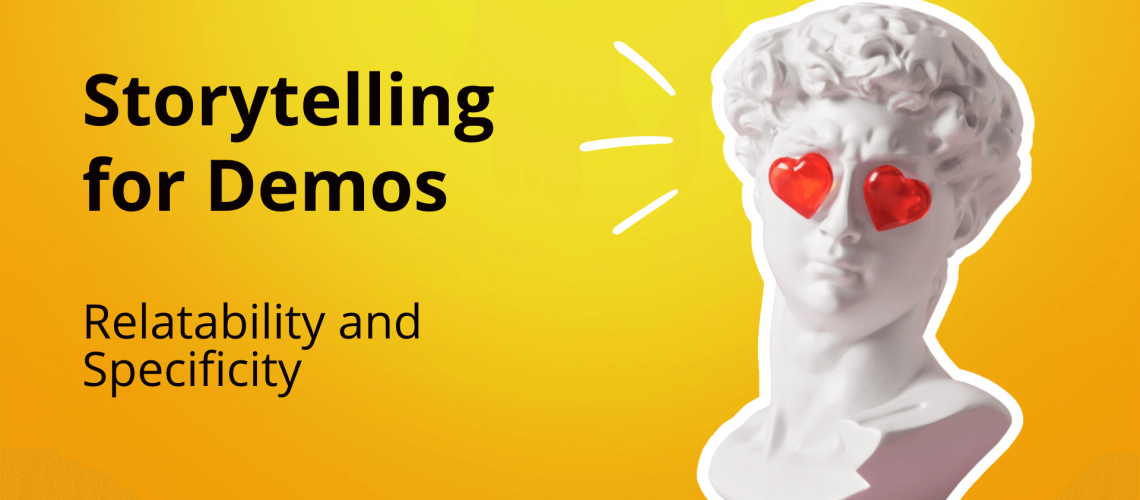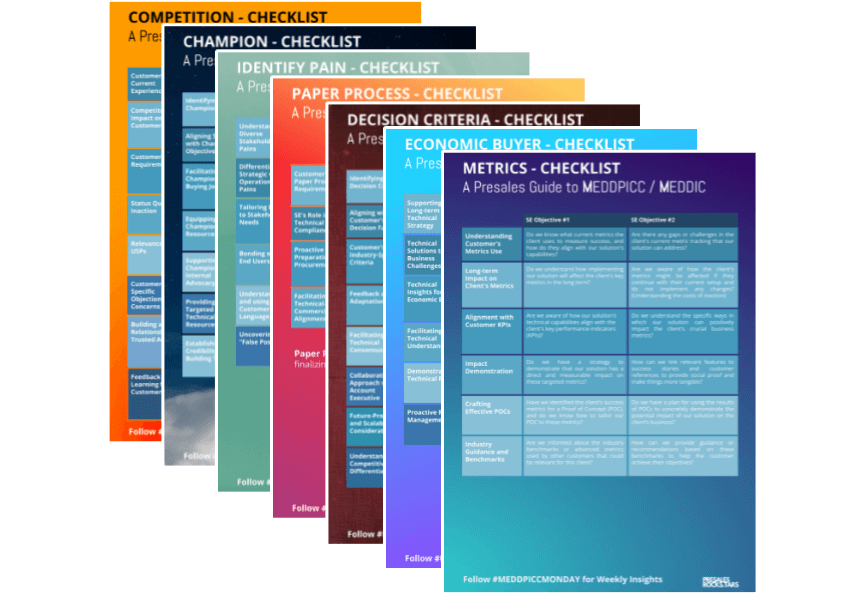Relatability & Specificity
Storytelling in demos is a game changer. When done right, it can boost how much your audience remembers by up to 70%.
But here’s the thing: traditional storytelling techniques often don’t work well in software demos. They can drag out too long or miss the mark when it comes to your customer’s specific needs.
So, how do we make storytelling in demos work? The answer lies in two key elements: relatability and specificity.
These two concepts help you craft stories that are both engaging and relevant to your audience.
Relatability: Connecting with Your Audience
Relatability is about making your audience feel like they are part of the story. It’s creating situations they can see themselves in. This makes the demo more engaging because they can personally connect with the challenges and solutions you’re presenting.
For example, instead of saying something generic like, “Our software helps companies improve productivity,” get specific and relatable.
Say:
“Meet Sarah, a senior project manager at a 500-employee retail company, just like you. Sarah he was constantly dealing with scheduling conflicts and communication breakdowns. It was chaotic.”
By introducing Sarah, who shares a role similar to your audience, you create a connection. The customer can see themselves in Sarah’s shoes, making the story more engaging. Now, they aren’t just hearing about features—they’re seeing how those features might solve problems they face every day.
Specificity: Painting a Clear Picture
Specificity in storytelling means using precise, vivid details. It’s about choosing the right words and examples to create a clear image in your audience’s mind.
For instance, rather than saying, “John went on a trip,” be more specific:
“John took a road trip to the Grand Canyon, driving his old red Volkswagen Beetle, feeling the sun on his face and the wind in his hair.”
This same concept applies in demos. Don’t just say, “Our software is flexible.” Instead, give a concrete example:
“Our software allowed Sarah to reschedule her team’s conflicting shifts with just a few clicks, eliminating the back-and-forth emails and phone calls.”
These specific details help the customer visualize exactly how your software works in real situations, making your solution more believable and relevant to their needs.
Putting Relatability and Specificity Together
When you combine relatability and specificity, your demo becomes more than just a product presentation—it becomes a story that the customer can see themselves in.
This makes it easier for them to understand how your software will solve their problems.
Let’s take a common demo scenario. Instead of starting with a boring feature walkthrough, frame it around a story that’s both relatable and specific:
„Meet Sarah. She’s a project manager at a retail company with 500 employees, just like you. Every week, she struggles with scheduling conflicts, which lead to frustrated employees and missed deadlines. She used to spend hours trying to coordinate shifts and balance workloads. But after implementing our solution, she was able to automate most of the process, reducing the time she spent on scheduling by 80%. Now, instead of stressing about timetables, she focuses on strategy and team growth.“
Or consider this:
„Meet Paul, a sales operations manager just like you. Paul was drowning in manual data entry and reporting, spending hours each week pulling together insights for leadership. But after implementing our software, Paul automated the entire reporting process. Now, they generate up-to-date sales insights with a single click and have more time to focus on growing the pipeline.“
These stories have a clear, specific example (scheduling conflicts, reporting struggles) and a relatable character (Sarah, Paul, both in roles your audience can identify with).
The audience sees real-world problems being solved by your product, making the demo more impactful and memorable.
Why It Works
Relatable and specific storytelling makes your demo stick because it speaks directly to your customer’s world. Instead of focusing on your software’s features, you’re showing them how it can solve their problems in a way that feels real and relevant.
Without this approach, your demo can easily become a feature dump, and your customer might tune out. But by integrating storytelling with relatability and specificity, you turn your demo into a compelling narrative that resonates.





